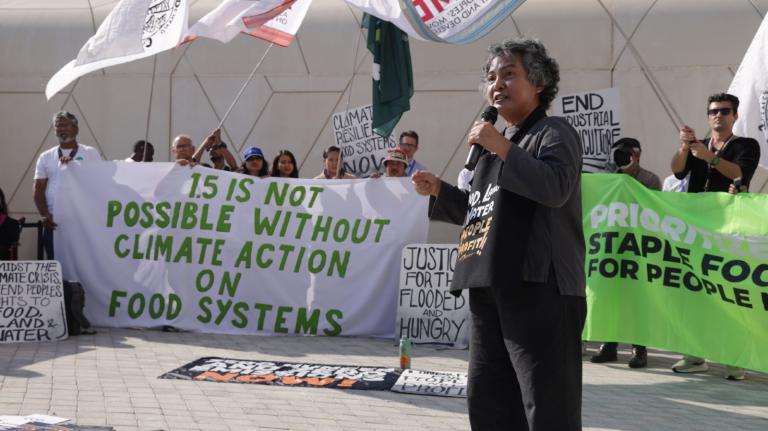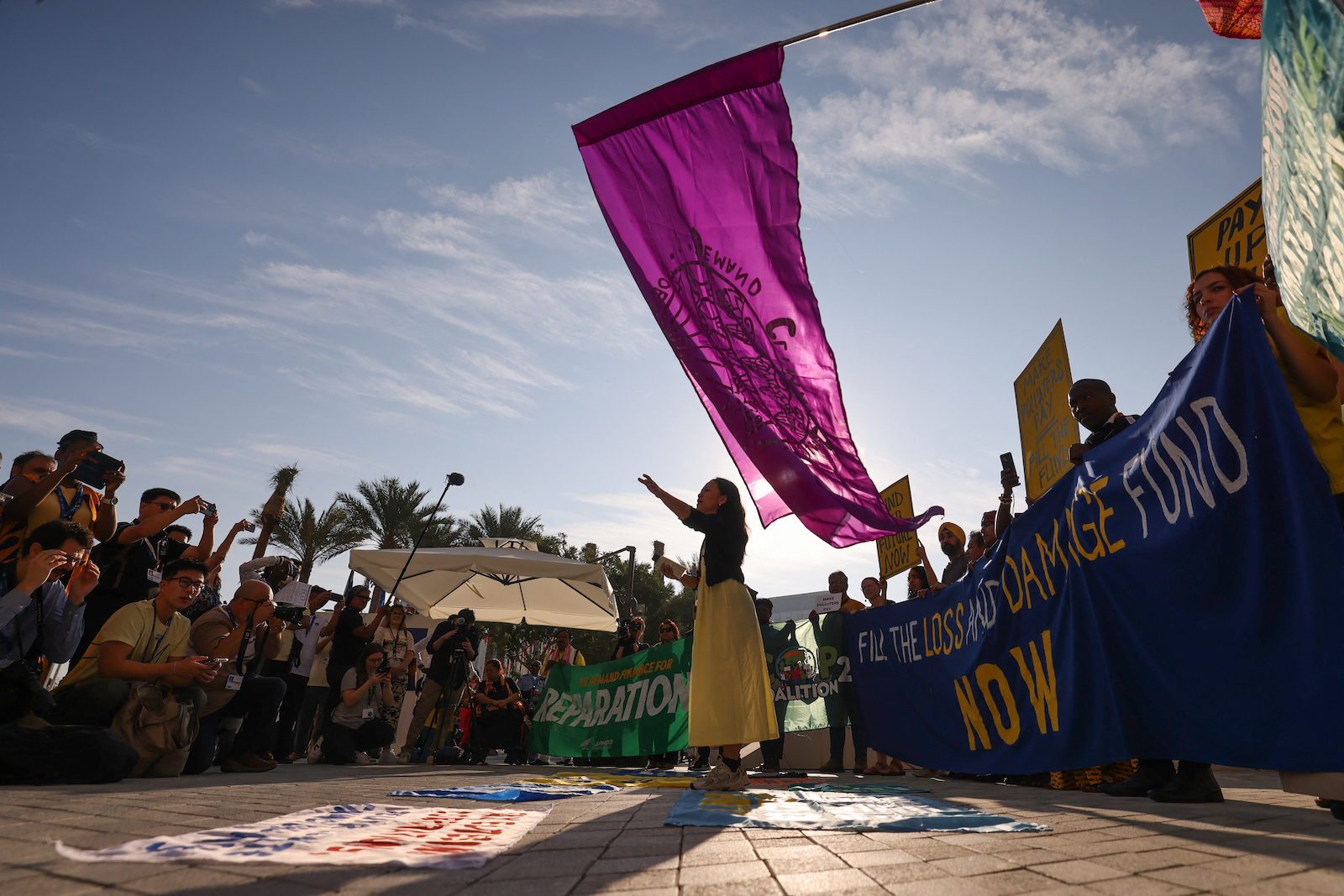The legacy of the COP28 climate summit, which concluded this week in Dubai, hinges on the success of a new international fund that was announced to great fanfare on the very first day of the conference. The stakes could hardly be higher: The so-called loss-and-damage fund is considered an essential resource for the survival of the countries most affected by the 1.2 degrees Celsius of global warming that has already occurred.
The loss-and-damage agreement represents a different kind of climate fund: The money isn’t meant to help climate-vulnerable countries mitigate their emissions or plan adaptation projects like sea walls or water reservoirs. Instead, it’s supposed to help them pay for damages that have already been caused by a specific climate-linked incident, like a storm, flood, heat wave, or other extreme weather event.
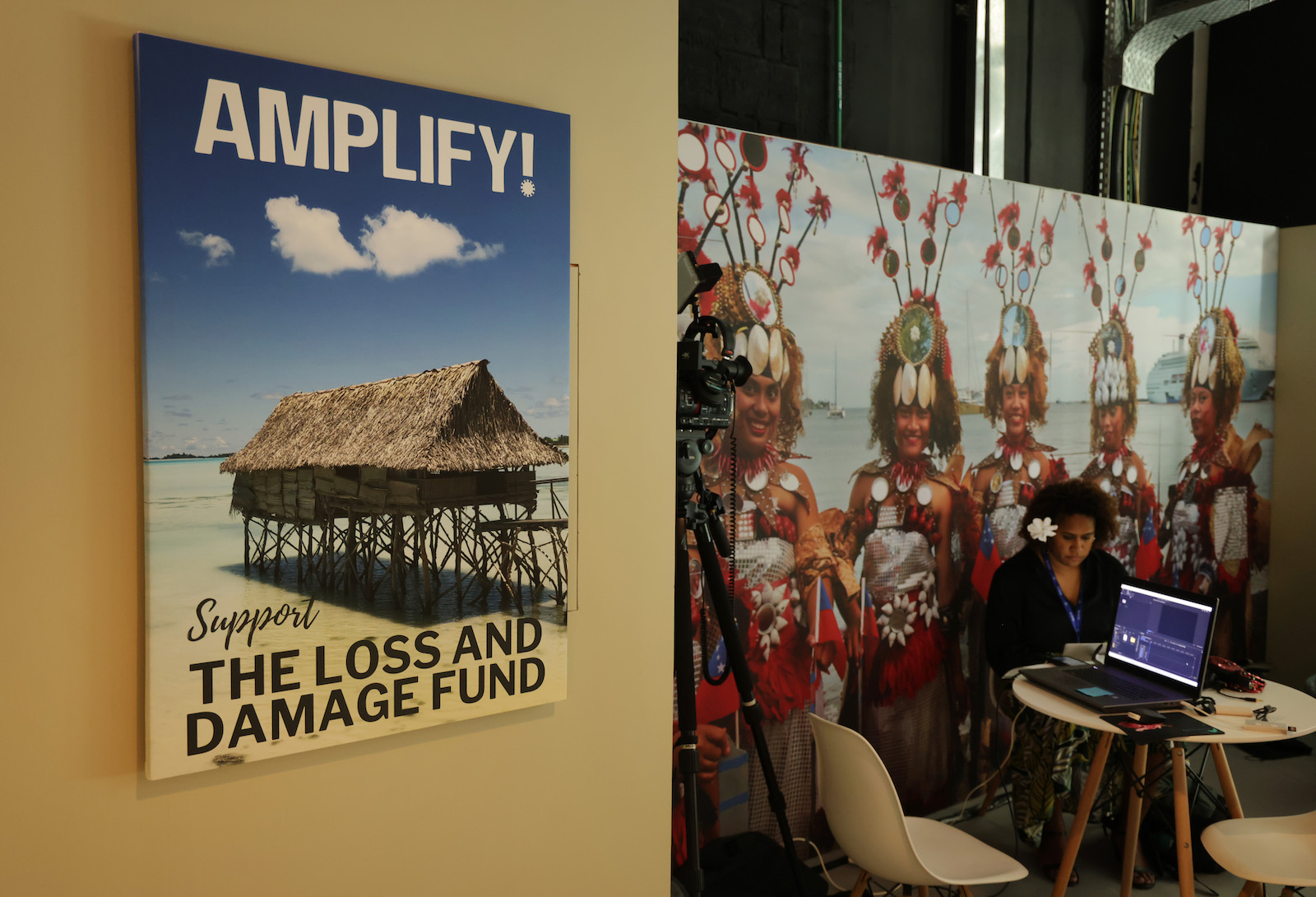
The fund is primarily intended for use by relatively poor, developing countries in the Global South for two related reasons. The first is that these are the sorts of countries that have already seen the most severe losses and damages tied to climate change: record-breaking floods in Bangladesh, historic drought in the Horn of Africa, life-threatening sea-level rise in the Marshall Islands, and infectious disease outbreaks in South Asia. The second is that, due to their late or still ongoing industrialization, these nations did much, much less to cause the climate change that is already harming them than their counterparts in rich and early-industrializing regions like the European Union and United States.
For decades, developing countries fought for the existence of a loss-and-damage fund. Now that it’s finally operational — it’s being housed, temporarily at least, at the World Bank — the hard part has arrived: filling up the fund, and getting the money to the countries that need it. More than $650 million has come in so far, with $100 million apiece from Germany and the United Arab Emirates, $75 million from the U.K., $17.5 million from the U.S., and $10 million from Japan. But these pledges, some portions of which the contributing countries relabeled or pulled from existing climate pledges, are insufficient to cover the scale of loss and damage developing nations are facing. Researchers estimate that countries need anywhere between $290 billion and $580 billion every year by 2030.
As debates continue over how to finance and deploy the fund such that it serves those most in need, one aspect is frequently lost in the conversation: how countries will use the money when they receive it.
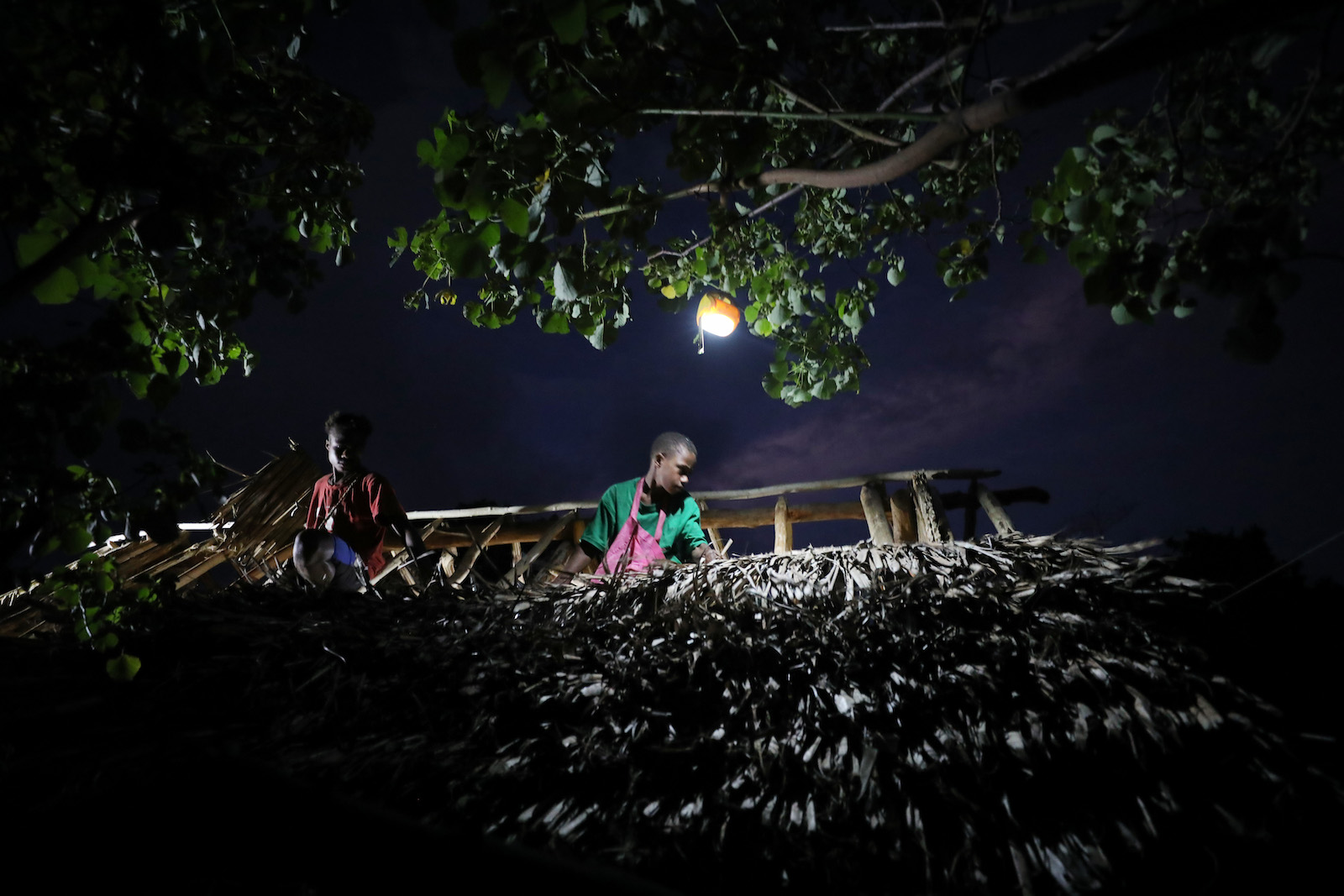
To begin answering this question, Grist reporters spoke with representatives of 10 developing nations to understand their needs and aspirations for the fund. While we received a wide range of responses, national leaders were united in their emphasis that the fund would not only pay for past damages, but also fortify their people against future losses.
They were also unanimous in their opposition to a debt-based structure that would saddle them with costly interest payments, preventing them from making the future investments needed to continue fortifying their countries against climate change. And they were clear, above all, that they haven’t been waiting on the fund to figure out how they’re going to survive climate change. Indeed, many countries already have the knowledge, preparation, and expertise needed to confront the climate crisis — they are just seeking the resources necessary to act on them.
Here is what we learned from each country.

Vanuatu
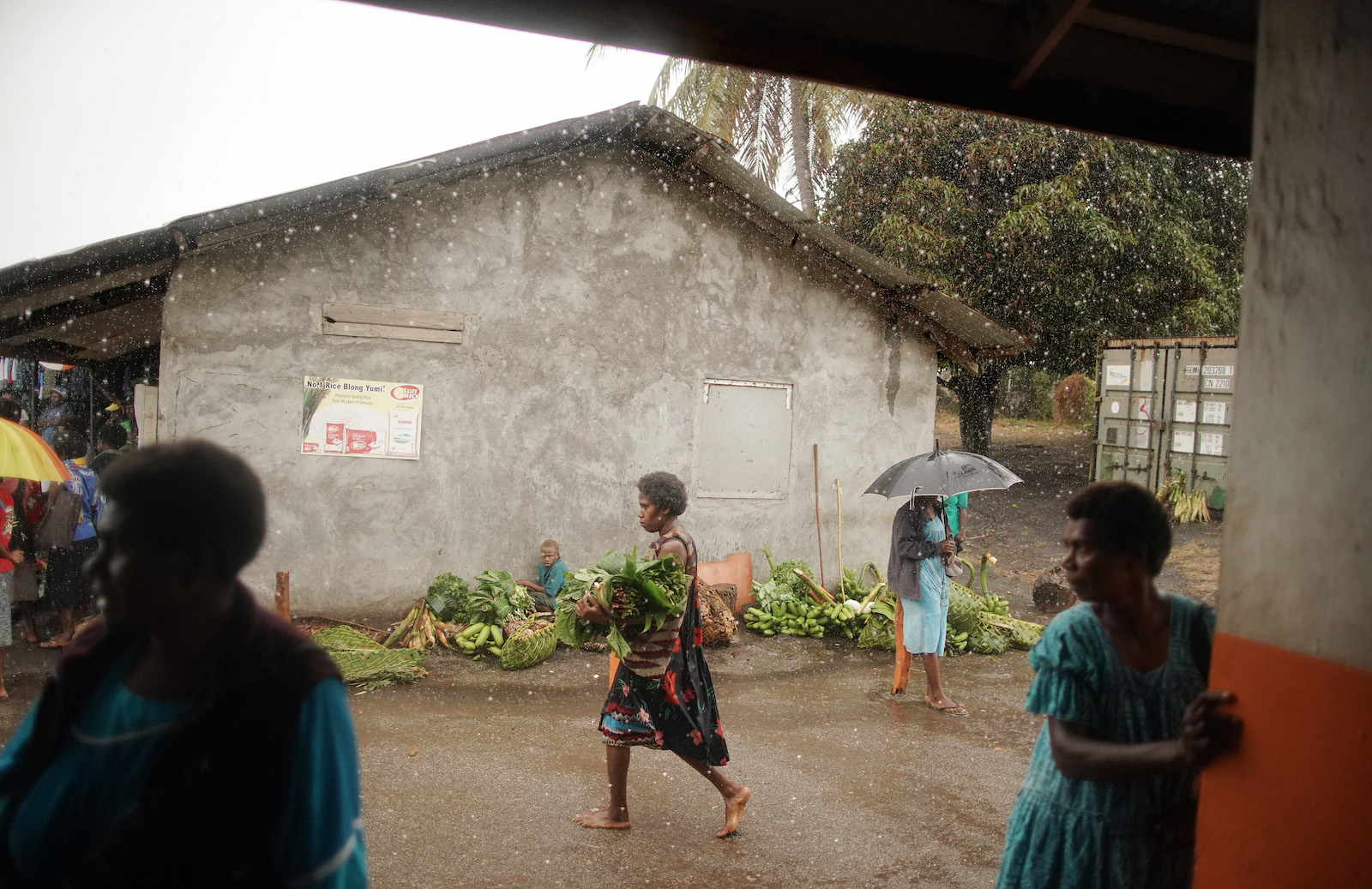
It started with the rain. During the first two months of 2022, torrential rain poured down on the western coast of Santo Island in Vanuatu. Then, in March, the rain-soaked mountainside buckled and a landslide sent soil, rocks, and debris plummeting, burying the village of Molpoi. Susan Balmet, a local fisherwoman, later said the loss of her village felt like the loss of her identity.
“Had I known in advance, we would have spent time taking pictures of the reef, moving some of the huge giant clams to other, safer areas, and telling our kids the stories of each stone and coral patch before it was taken from us,” she told the country’s Loss & Damage Taskforce. “There are things that can help us grieve, if they are done before it is too late.”
For decades, Vanuatu has been at the forefront of advocating for loss-and-damage funding. The South Pacific country is home to about 400,000 people across 83 islands, about 98 percent of whom are Indigenous Melanesians who speak more than 100 Native languages. But ocean acidification, sea-level rise, coral bleaching, extreme rainfall, extreme drought, and cyclones are increasingly battering the islands’ land and waters.
International loss-and-damage funding would allow Vanuatu to create its own national loss-and-damage fund, which would allow communities to apply directly for money to support the work they’ve been doing to recover from climate disasters for decades, said Christopher Bartlett, head of Vanuatu’s climate diplomacy.
That money could help rebuild lost villages, reestablish taro gardens, and plant thousands of coconut and cacao trees. It could build schools, houses, and clinics. With additional loss-and-damage resources, Vanuatu could also develop micro-insurance programs to help local farmers and fishers receive compensation when their crops are destroyed by extreme weather events. And perhaps most urgently, the funding could help Indigenous people document their traditional knowledge before it’s lost forever.
— Anita Hofschneider

Mozambique
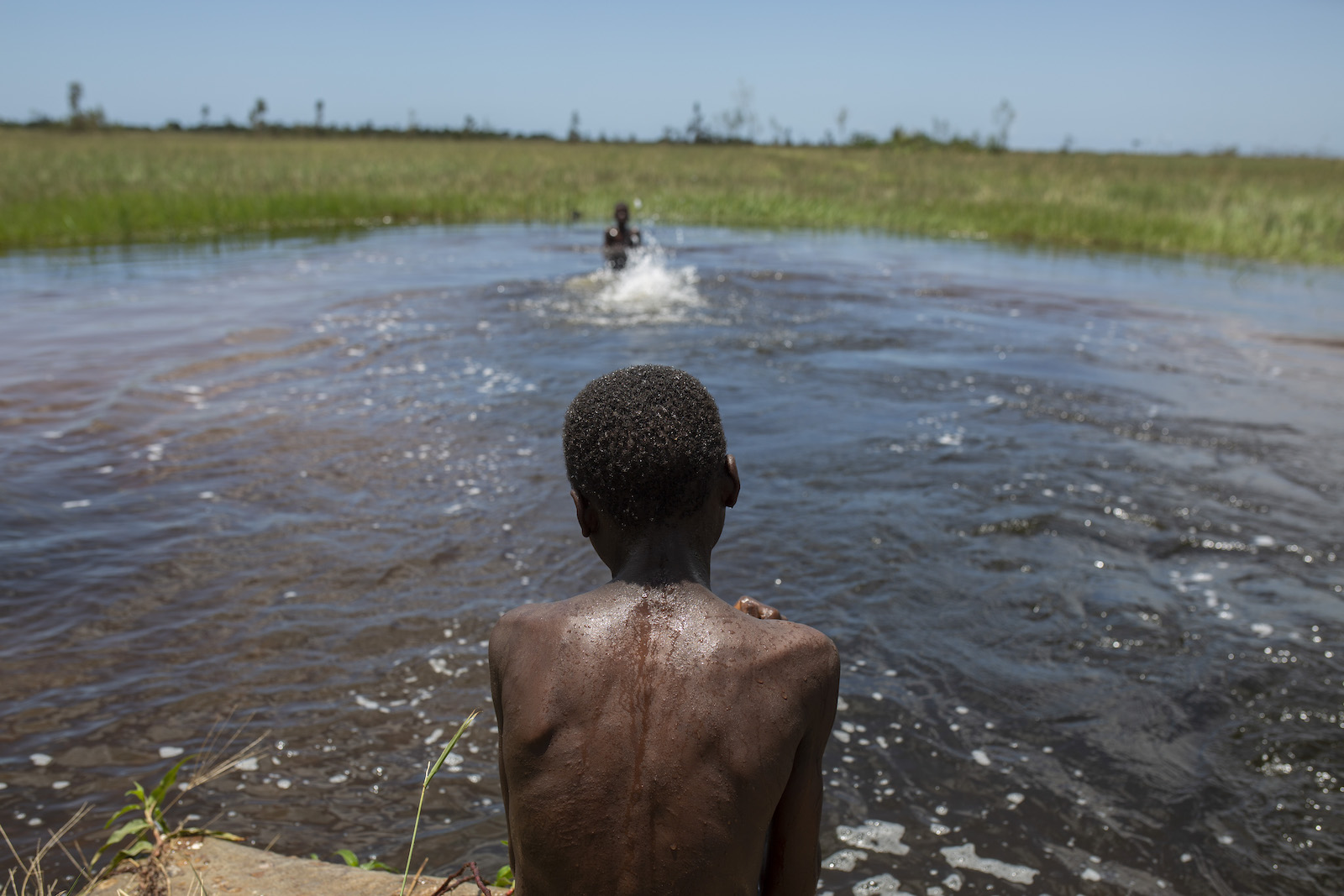
Earlier this year, Cyclone Freddie struck Mozambique not once but twice, spiraling out to sea after its initial landfall only to regain strength off the southeastern coast of Africa, breaking records and becoming the longest-lasting cyclone of all time. Nearly 200,000 people were displaced, crops were lost, and new outbreaks of cholera followed the storm’s path. Like its neighbors Malawi and Madagascar, the country is still rebuilding. Deadly cyclones have been a regular occurrence in the region in recent years, and more are likely to come as warmer waters create more ideal conditions for cyclones to develop. As a result, loss-and-damage funding is an urgent priority for the country’s leaders.
“Mozambique discovered that it is necessary to have a fund for losses and damages a long time ago, when the climate change situation began to intensify,” said Luis Machatine, who is in charge of planning and cooperation for Mozambique’s National Institute for Disaster Risk Management and Reduction. “For example, Cyclone Idai [in 2019] destroyed a lot of things that the state budget alone could not cover. But a fund could help in reconstruction of the losses suffered.”
At the top of the list of priorities is housing for those displaced.
“In the housing area, we have a lot of work linked to the resettlement of affected populations,” said Machatine. “We would also allocate it to boost our economy by rebuilding various infrastructures.”
But some things destroyed by climate change can never be replaced, according to Machatine.
“The real cost is tireless,” he said. “The damage caused is incalculable as it ranges from the loss of human life [to] flora and fauna [to] land and lakes.”
— Siri Chilukuri

Botswana
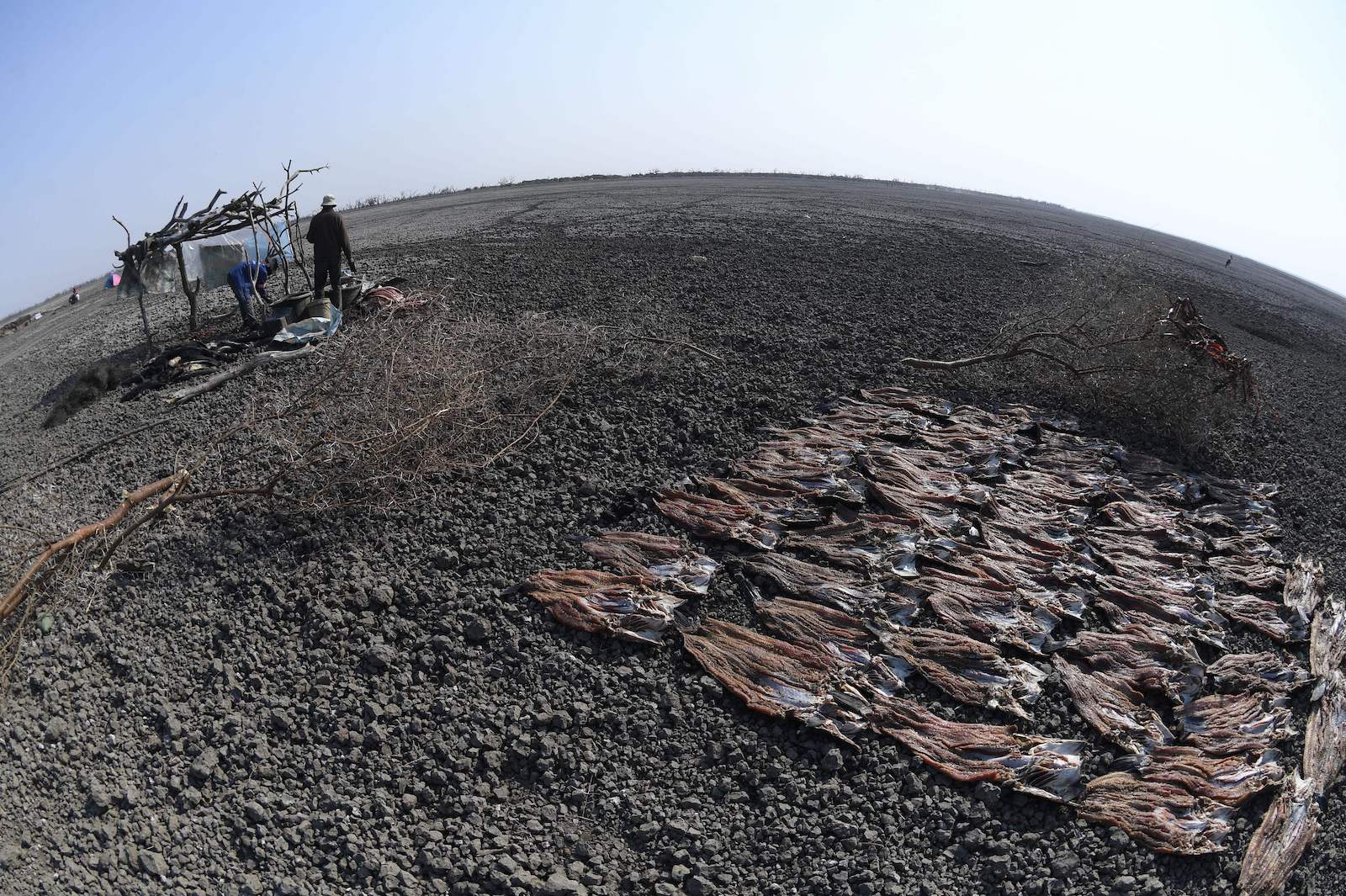
Thanks in large part to its enormous diamond mines, Botswana enjoys a better financial situation than many of its neighboring countries in southern Africa — but the desert nation is still highly vulnerable to climate change. Farmers and pastoralists rely on rainfall to feed crops and keep livestock alive, but drought cycles in the country are intensifying as the world warms. Recent dry periods saw thousands of cattle and goats perish as seasonal harvests failed. Even wildlife have begun to migrate in search of water: Elephants have rampaged through villages and destroyed homes, and some pastoralists have woken up to find lions on their verandas.
The national government already distributes aid packages with emergency food supplies and subsidies to farmers who lose their harvests, but this aid effort puts a strain on the country’s budget, according to Antoinette Moleele, a sustainable agriculture expert who serves as the consultant for Botswana’s national delegation to COP28.
“People in marginalized areas of the country, they’re poor, so they’re highly stressed by the droughts,” she said. “If we had a fund that is just there to be able to cover the relief, we would be able to feed children and pregnant women during these periods.”
Moleele said Botswana would also use loss-and-damage funds to invest in what she called “capacity building.” This would allow the government to design early-warning systems to alert pastoralists about dry spells. It would also increase scientific research into drought cycles and train young people to plant drought-resilient crops.
— Jake Bittle

Senegal
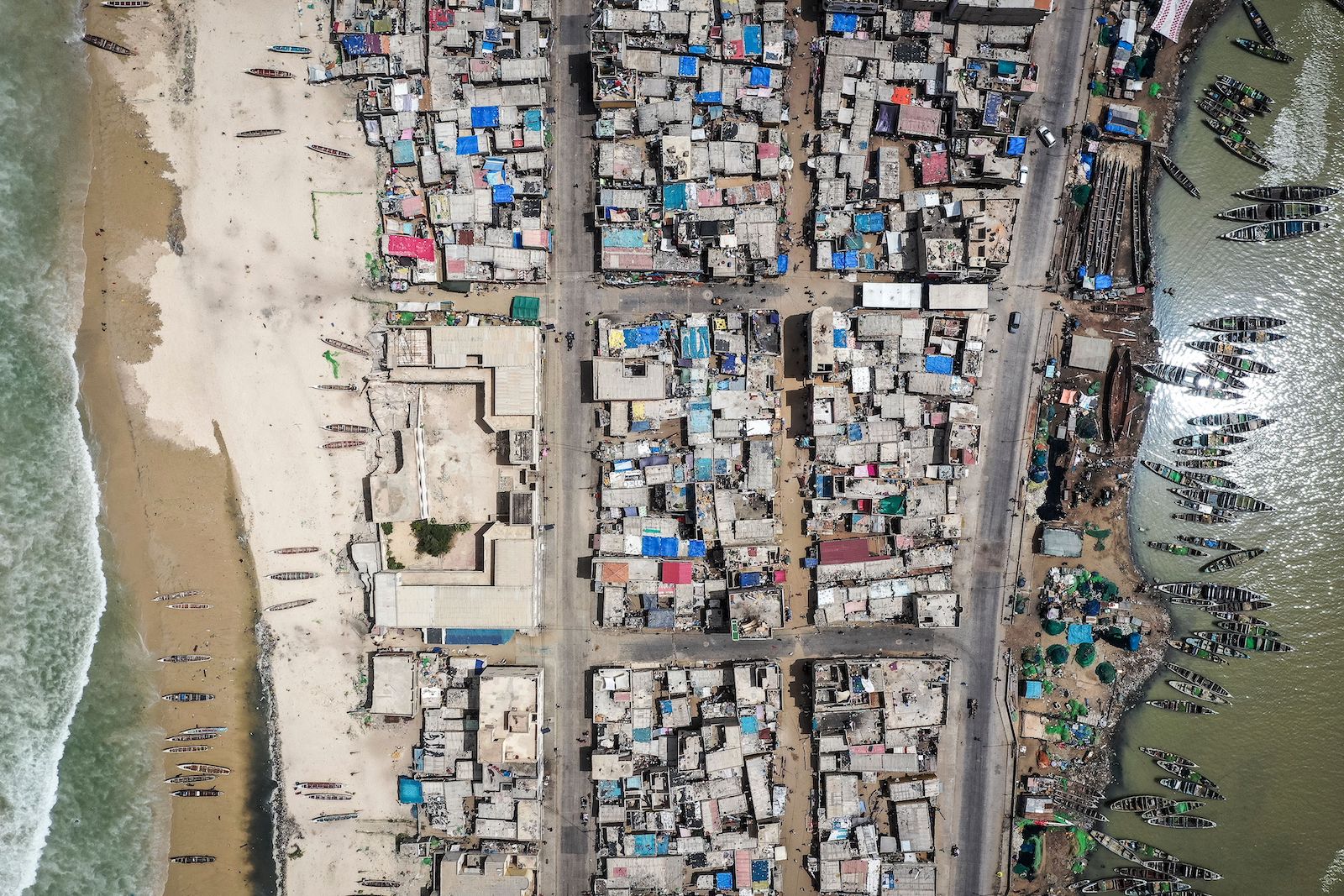
Idy Niang, a regional director at the Ministry of Environment and Sustainable Development in Senegal, describes climate change in his native country as a “slow-onset” disaster. While the frequency of extreme weather events such as flash floods has increased over the years, the greatest impacts of global temperature increase can be felt along the nation’s 330-mile coast, where sea-level rise is salinating farmland and forcing villagers to retreat from the shore. Islands in the southern part of the country are starting to disappear.
These gradual yet devastating effects have catalyzed an uptick in migration to the capital city, Dakar, which is suffering the complications of rapid urbanization: a lack of adequate planning, insufficient public services, frequent power outages, and water infrastructure problems.
Niang said that loss-and-damage funding will ideally help pay for the reclamation of salinated farmland using imported technology. It could also assist with the “very expensive” relocation of residents away from land that is getting swallowed by the sea. Niang emphasized that this climate migration would entail “non-economic losses” that cannot be quantified: the loss of culture and native land. Coming from a small fishing village himself, he understands this intimately.
“What we need to define is how to finance the non-economic losses,” he said. “That is a very big question.”
— Naveena Sadasivam and Lylla Younes

Gambia
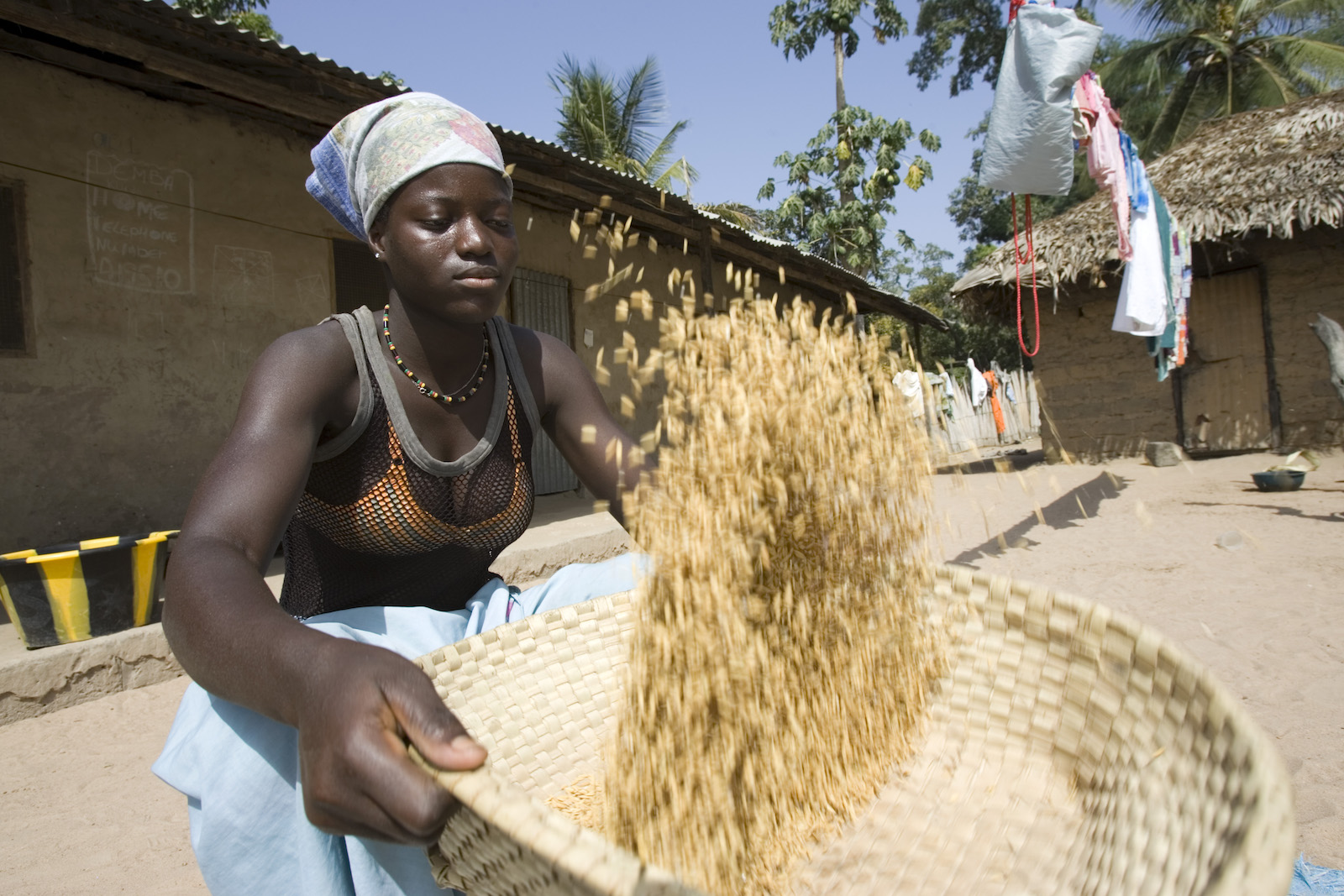
Like many other countries in West Africa, this tiny nation of around 2.6 million people depends heavily on cash crops that are vulnerable to climate change. Agriculture makes up around a quarter of Gambia’s $2 billion annual economic output, and well over half the country’s labor force works growing crops like peanuts, millet, sorghum, and rice. During drought periods like the one that has wracked the country over the past few years, farmers delay planting and harvests fail altogether.
A cohort of African countries has created an insurance scheme called the African Risk Capacity program that pays out farmers who lose their crops to drought. The program paid out $187,000 in cash transfers to around 17,000 farmers in the drier eastern half of Gambia earlier this year. This infusion of cash allowed the farmers to buy food supplies and substitute their lost income from the drought. But Gambia’s government has struggled to make premium payments to the insurance program in recent years as it deals with a high debt load and rampant poverty, so the payments reached only a sliver of the affected farming population.
Isatou Camara, a development planner at the finance ministry of Gambia, says her small country would likely use loss-and-damage funding to pay into this existing insurance plan, rather than trying to stand up a new fund for drought relief.
“From 2015 to now, the government was actually able to pay [for insurance premiums] from its own budget resources only twice,” Camara told Grist. “Having this loss-and-damage fund in a way could provide subsidies for farmers to at least receive payout when they experience these climate-related events.”
— Jake Bittle

Panama
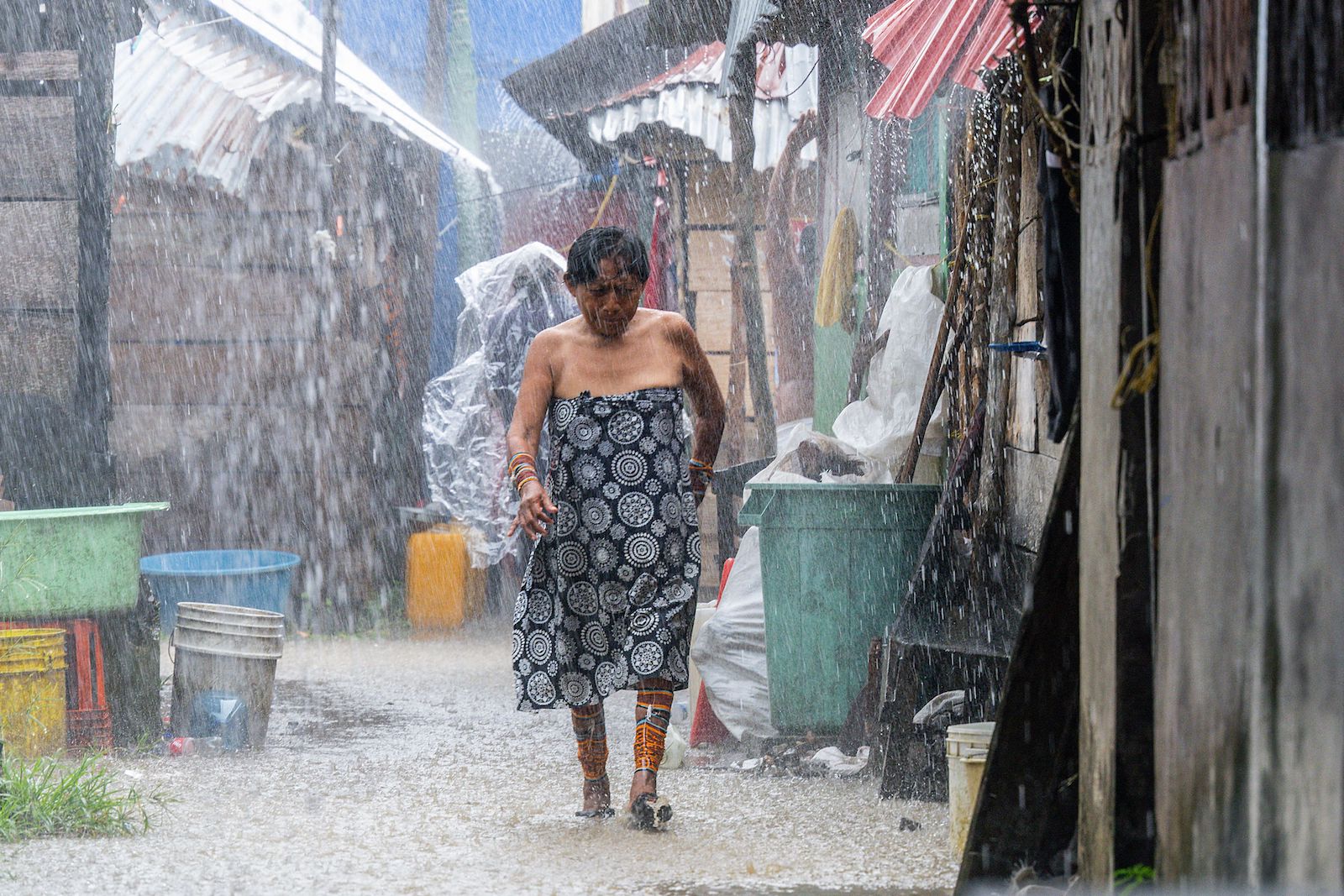
Situated at the center of the isthmus connecting Central and South America, Panama is “like an island under the influence of multiple oceans,” said Ligia Castro de Doens, the director of climate change in the nation’s Ministry of the Environment.
Strings of hurricanes and short, powerful rainstorms have battered the country in recent years, damaging infrastructure and displacing Indigenous people. Loss-and-damage funding would be used to rebuild bridges and highways, de Doens said, and to compensate for economic losses from the country’s vulnerable tourism sector.
Beyond these immediate threats, Panama is projected to lose more than 2 percent of its landmass by the midcentury. And while three Indigenous communities are poised to relocate to new government-built villages in January, another 63 are expected to require similar assistance over the next 25 years. Officials are also in the process of addressing an impending energy crisis stemming from changing rainfall patterns. Reservoirs in the western part of the country are shrinking due to a lack of consistent rainfall, imperiling the region’s hydroelectricity-heavy energy supply. The eastern end of the country has the opposite problem: Torrential rains threaten to overtop a reservoir and damage energy infrastructure. The loss-and-damage fund could help finance all of these efforts.
— Lylla Younes

Dominican Republic
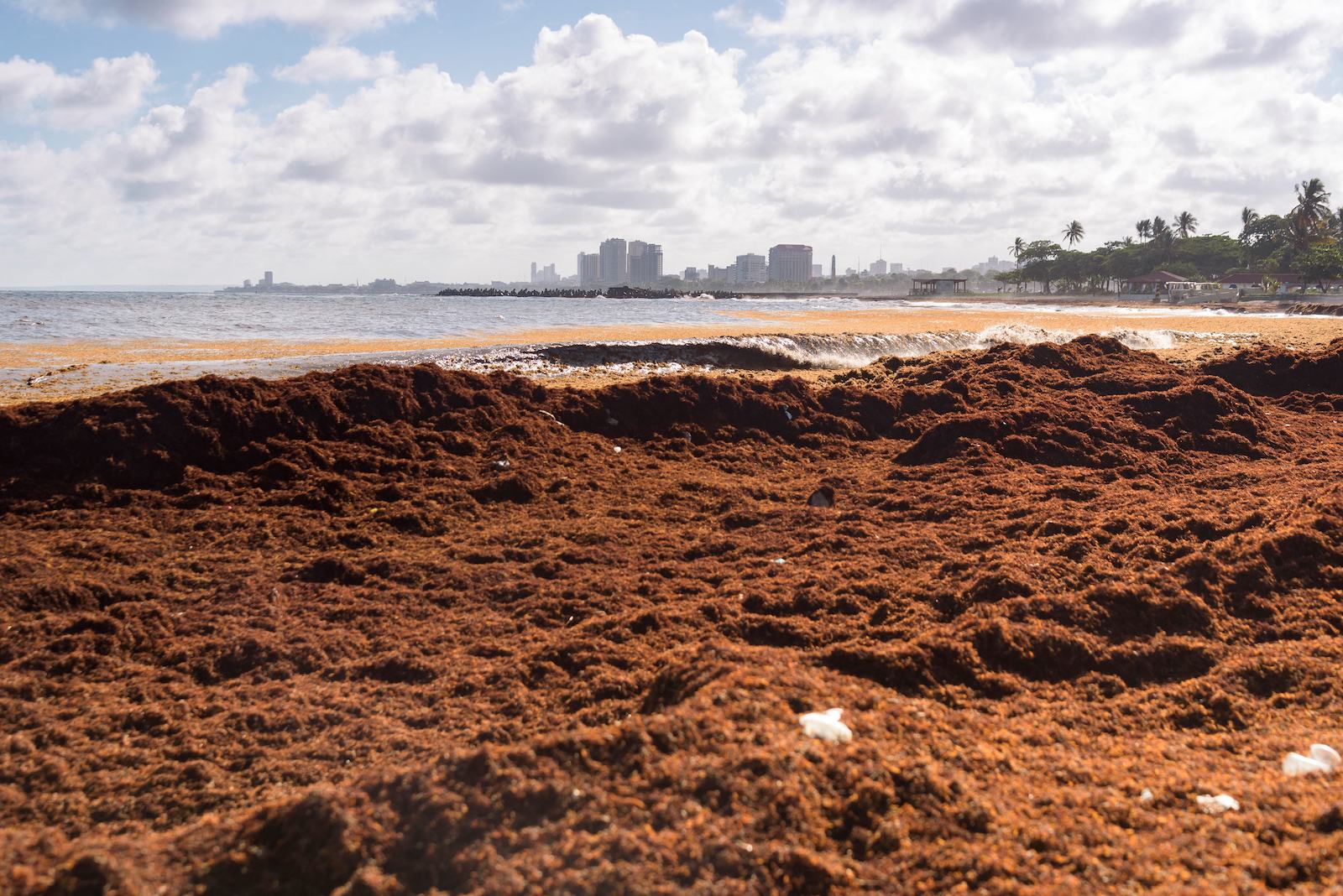
With more than 1,000 kilometers of Caribbean coastline, the Dominican Republic is one of the most climate-vulnerable countries in the world. Beyond the expected hurricanes and torrential rain storms, this exposure has led to a type of microalgae known as sargasso blanketing the island’s pristine beaches, driving away tourism as a result. Milagro de Camps, the vice minister of climate change and sustainability at the Dominican Republic’s Ministry of the Environment, told Grist that the unwelcome weed used to visit the island once a year, but now it sticks around all year long, sucking oxygen out of the sea and threatening biodiversity. It’s a relatively new problem that only impacts the Caribbean, she said, and officials are struggling to figure out the best way to address it.
“We’re talking about millions of tons [of the algae] across multiple countries, and we don’t even have a disposal site for it yet,” she said. “It’s a huge problem.”
In addition to dealing with the extremely costly sargasso buildup, the federal government is hard at work on numerous climate preparedness projects, like implementing a multi-hazard early-warning system and climate-proofing public infrastructure. But their efforts to make progress on those initiatives are often hindered by extreme weather events, which drain critical funding and resources. The average economic loss from hurricanes in the Dominican Republic is $345 million per year, which is roughly 0.5 percent of the nation’s gross domestic product. That number is expected to rise to 3.4 percent by 2030.
That’s why a loss-and-damage fund is so important for the Dominican Republic, de Camps said: Having quick access to funds in the immediate aftermath of destructive storms would help the country rebuild without causing any setbacks to its ongoing adaptation efforts.
— Lylla Younes

Barbados
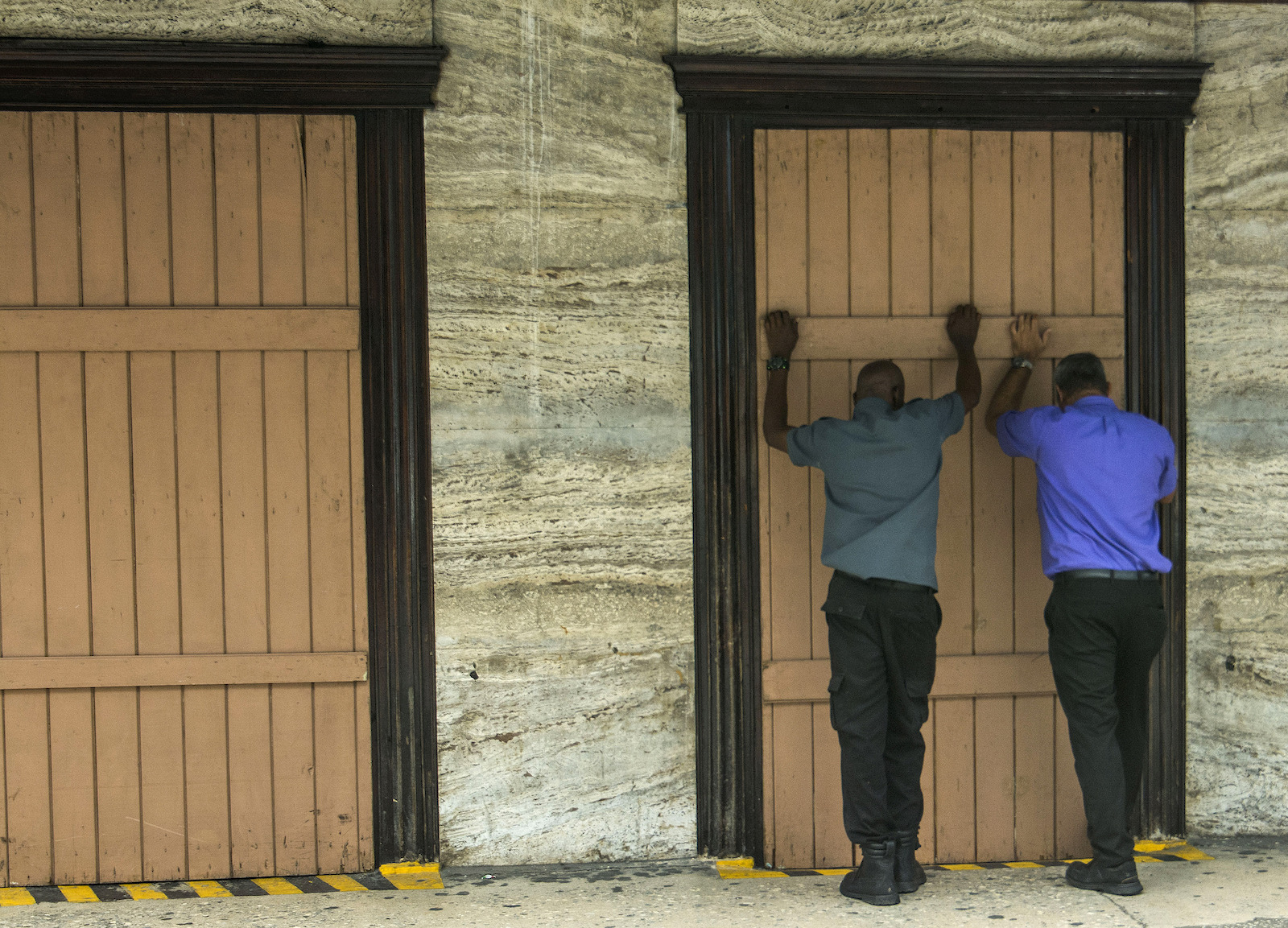
Barbados is drowning in floods and debt. The low-lying island nation is one of the most prosperous Caribbean countries, but sea-level rise, saltwater intrusion, and drought have handicapped the country’s agricultural industry. And when it does rain, it pours, destroying infrastructure and forcing the nation to borrow money from multilateral development banks and the private market, trapping it in a cycle of debt.
“Half of our debt increases are due to an event that we didn’t cause,” Avinash Persaud, the climate envoy to Barbados Prime Minister Mia Mottley, told Grist.
Persaud says the government is trying to waterproof Barbados: It has built sea walls in the form of concrete structures or large rock conglomerations along the coastline, which it has then covered with a boardwalk. The resulting infrastructure both aids in preventing coastal erosion and also creates a public space for tourists and locals alike. With inland flooding becoming more common, Barbados has also installed drainage infrastructure and flood defenses inland. As in the Dominican Republic, warmer ocean temperatures have led to the proliferation of sargassum, and the seaweed is choking the country’s coral reefs and interfering with local fishing practices. The government, along with nonprofit groups and the private sector, is helping fishermen track the spread of sargassum and identify fertile fishing spots. Many of these programs are part of Barbados’ national strategy for climate resilience, which is called Roofs to Reefs.
A loss-and-damage fund would ease the burden of paying for some of these programs and help the country respond to both rapid and slow-onset climate events, said Persaud. If a natural disaster strikes Barbados, the loss and damage fund’s managers could conduct an assessment of the damage and provide assistance accordingly. For slow-onset disasters such as drought and sea-level rise, the country could apply for grants to fund projects that offset its losses. Farmers suffering from crop failure due to drought or flooding, for instance, could be relocated to new fields with built-in irrigation, reducing the risks of an unpredictable weather system. Persaud said the total cost of responding to climate change for the country is about $5 billion — 100 percent of Barbados’ gross domestic product.
— Naveena Sadasivam

Trinidad and Tobago
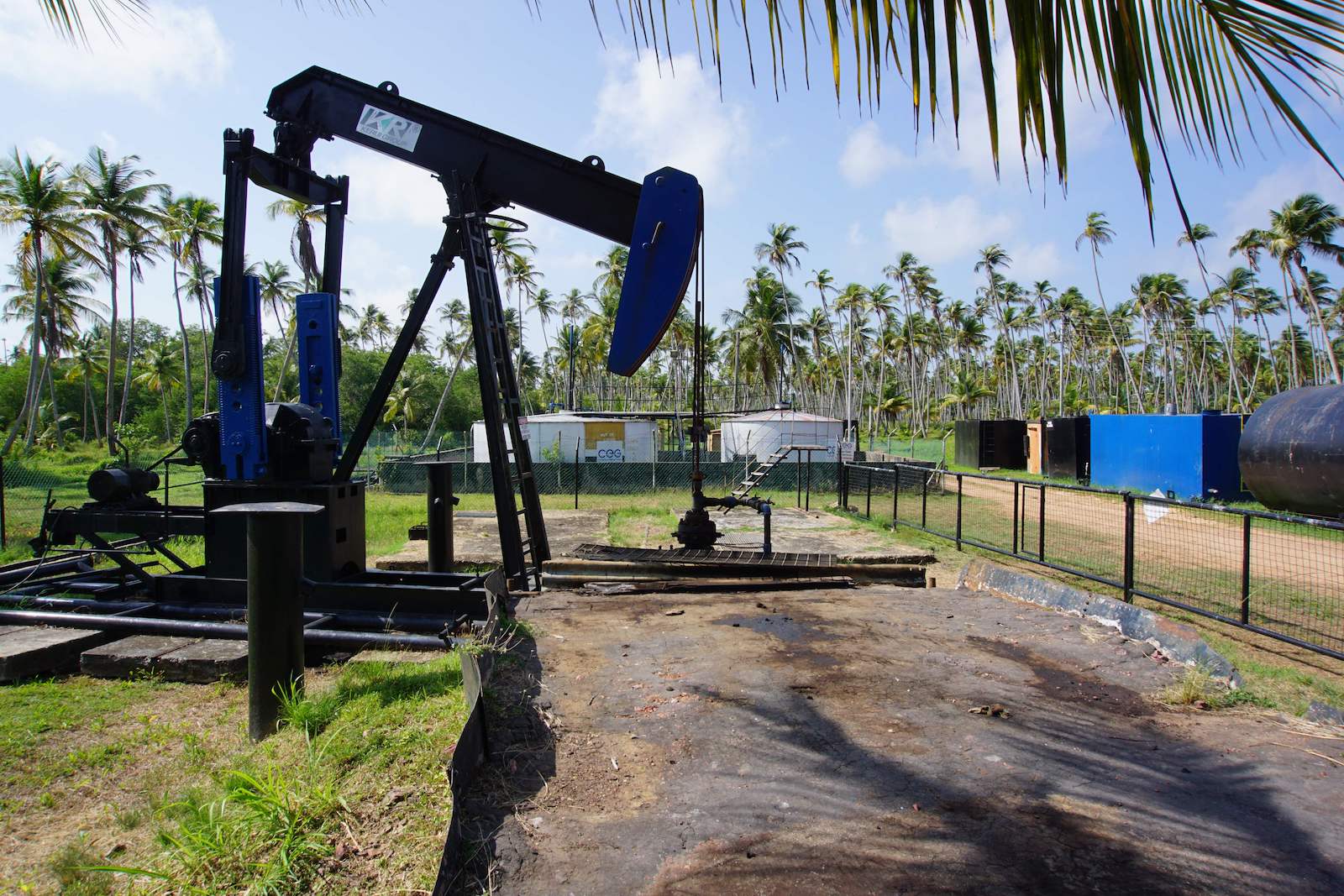
Trinidad and Tobago has been part of a vital coalition of small island nations pushing for the creation of the loss-and-damage fund. The Caribbean island is warming two and a half times faster than the global average, and sea-level rise is so severe that it’s starting to topple local monuments. Extreme heat has destroyed harvests, pushing crops to their limit and limiting the vital rainwater that irrigates the country’s farmland.
No amount of loss-and-damage funding can neutralize these effects, according to Kishan Kumarsingh, head of multilateral environmental agreements for Trinidad and Tobago. He works within the country’s Ministry of Planning and Development, which coordinates government entities working on economic, social, and environmental development.
“There is no impact or set of impacts from a climate event, like a flood or drought, that allows you to be pristine or set back to zero,” said Kumarsingh. “There will always be residual losses and damage.”
For Trinidad and Tobago, this means that getting a loss-and-damage fund up and running as quickly as possible is key — and the first step after that is intensive research to better understand the country’s needs. For example, because water availability affects everything from agriculture to sanitation, Kumarsingh believes that research into the country’s water problems will yield insights that can allow it to tackle multiple challenges with speed and efficiency.
All of this — the years of negotiation pushing for loss-and-damage funding and all the efforts that will accompany the money when it comes through — is in service of the most vulnerable residents of Trinidad and Tobago, according to Kumarsingh. He believes that to tackle an issue as vital and complex as climate change, only holistic solutions beyond merely decarbonizing can truly give communities a fighting chance.
“It’s not only about energy transition,” said Kumarsingh. “It is also about the loss of livelihoods of persons impacted directly by climate change [who] have very low carbon footprints — for example, coastal communities [that] depend on the natural environment for income.”
— Siri Chilukuri

Guyana
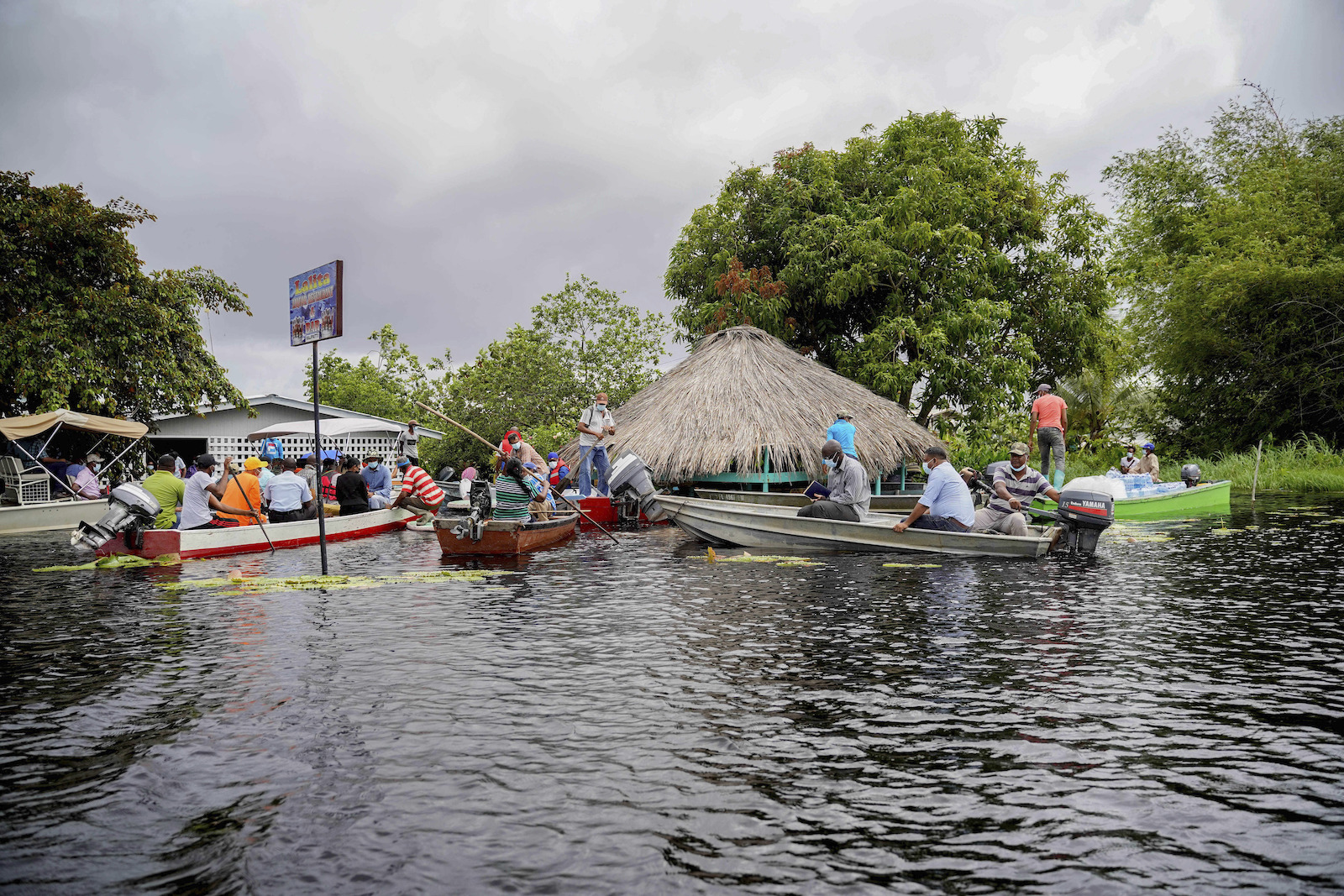
In January 2005, the South American nation of Guyana experienced a devastating flood that lasted for weeks. A round of heavy rains coincided with a high lunar tide to overwhelm drainage systems around the capital of Georgetown and its neighboring cities; more than two-thirds of the capital went underwater and thousands of homes were destroyed. The floods highlighted an extreme vulnerability that climate change will exacerbate with heavier rains: The vast majority of the nation’s population lives in coastal areas that sit well below sea level.
Pradeepa Bholanath, a senior official at Guyana’s Ministry for Natural Resources and the Environment, says the country needs around $1.6 billion by 2025 for a series of big investments that would protect the coast against future flooding. These include building new sea walls along coastal cities like Georgetown, restoring mangrove forests that can protect shorelines from flooding, and expanding agricultural drainage canals to prevent crops from going underwater.
But the country also needs money for its direct response efforts in future floods: In 2020, while it was in the midst of planning coastal adaptation projects, the country suffered another flood that displaced residents, destroyed harvests, and forced the government to relocate key health and education infrastructure. Bholanath believes that the new loss-and-damage fund needs to support both long-term resilience efforts and short-term disaster response.
“Whilst we were doing all that preparing for the future, adjusting economic activities that are impacted by climate, making ourselves more climate resilient, the flooding happened,” she said. “Then what ended up being the priority was finding ways in which we can address health impacts, move people to higher ground, and save whatever crops could be saved.”
— Jake Bittle
Grist staff writer Zoya Teirstein also contributed reporting to this story.
